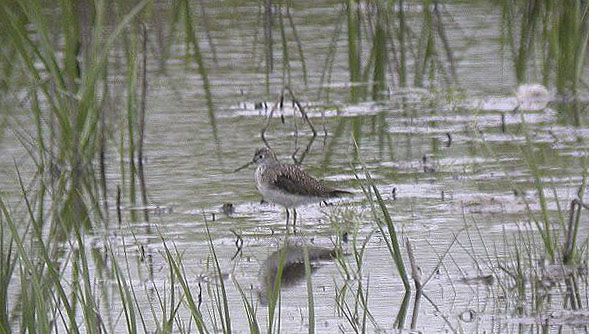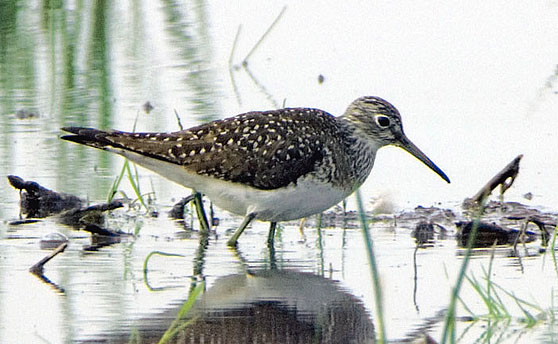Solitary Sandpiper - Tringa solitaria
On Sunday 14 May 2006 after ending his survey Mark Hoekstein went to some of his favourite birding spots in Zeeland (southwestern province in the Netherlands). At around noon at a small marsh land called Bokkegat at Wissenkerke Zld, he saw a lonely sandpiper, either a Green Sandpiper Tringa ochropus or a Wood Sandpiper T glareola, but something was wrong. He continued looking and noticed dark bars at the side of the tail, an eye-ring and hardly a supercilium. He warned some birders nearby. On arrival of some of these birders, he suddenly saw the dark rump and uppertail and identified the bird as a Solitary Sandpiper Tringa solitaria. He decided to warn all other birders in the country by putting the message on the
pager system. And finally all present birders saw the bicoloured bill and grey-green legs, making the identification complete. The
bird stayed till 17 May. I saw the bird in a blur, since I had my annual Big
Day the day before (186 species!). At first I could not motivate myself to go,
but my ever faithfull companion Leo Heemskerk offered me to pick me up and so
we both saw the bird in the late afternoon.

15 May 2006, Bokkegat, Wissenkerke Zld; © Cor Hopman.

15 May 2006, Bokkegat, Wissenkerke Zld; © Patrick Palmen.
It was accepted as the first record for the Netherlands. After studying photographs,
it proved to be the southeastern nominate form T s solitaria, because of
the clearer loral stripe, compared to the northwestern form T s cinnamomea
(cf Dutch Birding 28 (3): page 198-200, 2006, DB 29 (2): 79-82, 2007).
To the main-index, the 2006-index
or the next new (sub)species Baltic Gull.

